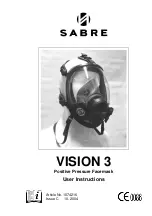
Krautkramer USM 35X
Issue 01, 04/2005
1-7
Introduction
Important information on ultrasonic testing
Echo display comparison method
The echo from a small, natural flaw is usually smaller
than the echo from an artificial comparison flaw, e.g.
circular disc flaw of the same size. This is due, for in-
stance, to the roughness of the surface of a natural
flaw, or to the fact that the beam does not impinge on it
at right angles.
If this fact is not taken into account when evaluating
natural flaws, there is a danger of underestimating their
magnitude.
In the case of very jagged or fissured flaws, e.g. shrink
holes in castings, it may be that the sound scattering
occurring at the boundary surface of the flaw is so
strong that no echo at all is produced. In such cases, a
different evaluation method should be chosen, e.g. use
of the backwall echo attenuation in the evaluation.
The distance sensitivity of the flaw echo plays an im-
portant part when testing large components. Attention
should be paid here to choosing artificial comparison
flaws which are as far as possible governed by the
same ”distance laws” as the natural flaws to be evalu-
ated.
The ultrasonic wave is attenuated in any material. This
sound attenuation is very low, e.g. in parts made of
fine-grained steel, likewise in many small parts made of
other materials. However, if the sound wave travels
larger distances through the material, a high cumulative
sound attenuation can result even with small attenua-
tion coefficients. There is then a danger that echoes
from natural flaws appear too small. For this reason, an
estimate must always be made of the effects of attenu-
ation on the evaluation result and taken into account if
applicable.
If the test object has a rough surface, part of the inci-
dent sound energy will be scattered at its surface and
is not available for the test. The larger this initial scat-
tering, the smaller the flaw echoes appear, and the
more errors occur in the evaluation result.
It is therefore important to take the effect of the test
object’s surfaces on the height of the echo into account
(transfer correction).
Krautkramer USM 35X
Issue 01, 04/2005
1-7
Introduction
Important information on ultrasonic testing
Echo display comparison method
The echo from a small, natural flaw is usually smaller
than the echo from an artificial comparison flaw, e.g.
circular disc flaw of the same size. This is due, for in-
stance, to the roughness of the surface of a natural
flaw, or to the fact that the beam does not impinge on it
at right angles.
If this fact is not taken into account when evaluating
natural flaws, there is a danger of underestimating their
magnitude.
In the case of very jagged or fissured flaws, e.g. shrink
holes in castings, it may be that the sound scattering
occurring at the boundary surface of the flaw is so
strong that no echo at all is produced. In such cases, a
different evaluation method should be chosen, e.g. use
of the backwall echo attenuation in the evaluation.
The distance sensitivity of the flaw echo plays an im-
portant part when testing large components. Attention
should be paid here to choosing artificial comparison
flaws which are as far as possible governed by the
same ”distance laws” as the natural flaws to be evalu-
ated.
The ultrasonic wave is attenuated in any material. This
sound attenuation is very low, e.g. in parts made of
fine-grained steel, likewise in many small parts made of
other materials. However, if the sound wave travels
larger distances through the material, a high cumulative
sound attenuation can result even with small attenua-
tion coefficients. There is then a danger that echoes
from natural flaws appear too small. For this reason, an
estimate must always be made of the effects of attenu-
ation on the evaluation result and taken into account if
applicable.
If the test object has a rough surface, part of the inci-
dent sound energy will be scattered at its surface and
is not available for the test. The larger this initial scat-
tering, the smaller the flaw echoes appear, and the
more errors occur in the evaluation result.
It is therefore important to take the effect of the test
object’s surfaces on the height of the echo into account
(transfer correction).
Summary of Contents for Krautkramer USM 35X
Page 8: ...0 8 Issue 01 04 2005 Krautkramer USM 35X ...
Page 9: ...Krautkramer USM 35X Issue 01 04 2005 1 1 Introduction 1 Introduction 1 ...
Page 20: ...1 12 Issue 01 04 2005 Krautkramer USM 35X ...
Page 27: ...Krautkramer USM 35X Issue 01 04 2005 3 1 Initial start up 3 Initial start up 3 ...
Page 35: ...Krautkramer USM 35X Issue 01 04 2005 4 1 Principles of operation 4 Principles of operation 4 ...
Page 49: ...Krautkramer USM 35X Issue 01 04 2005 5 1 Operation 5 Operation 5 ...
Page 130: ...5 82 Issue 01 04 2005 Krautkramer USM 35X ...
Page 131: ...Krautkramer USM 35X Issue 01 04 2005 6 1 Documentation 6 Documentation 6 ...
Page 135: ...Krautkramer USM 35X Issue 01 04 2005 7 1 Maintenance and care 7 Maintenance and care 7 ...
Page 148: ...7 14 Issue 01 04 2005 Krautkramer USM 35X ...
Page 177: ...Krautkramer USM 35X Issue 01 04 2005 9 1 Appendix 9 Appendix 9 ...
Page 190: ...9 14 Issue 01 04 2005 Krautkramer USM 35X ...
Page 191: ...Krautkramer USM 35X Issue 01 04 2005 10 1 Changes 10 Changes 10 ...
Page 193: ...Krautkramer USM 35X Issue 01 04 2005 11 1 Index 11 Index 11 ...
















































